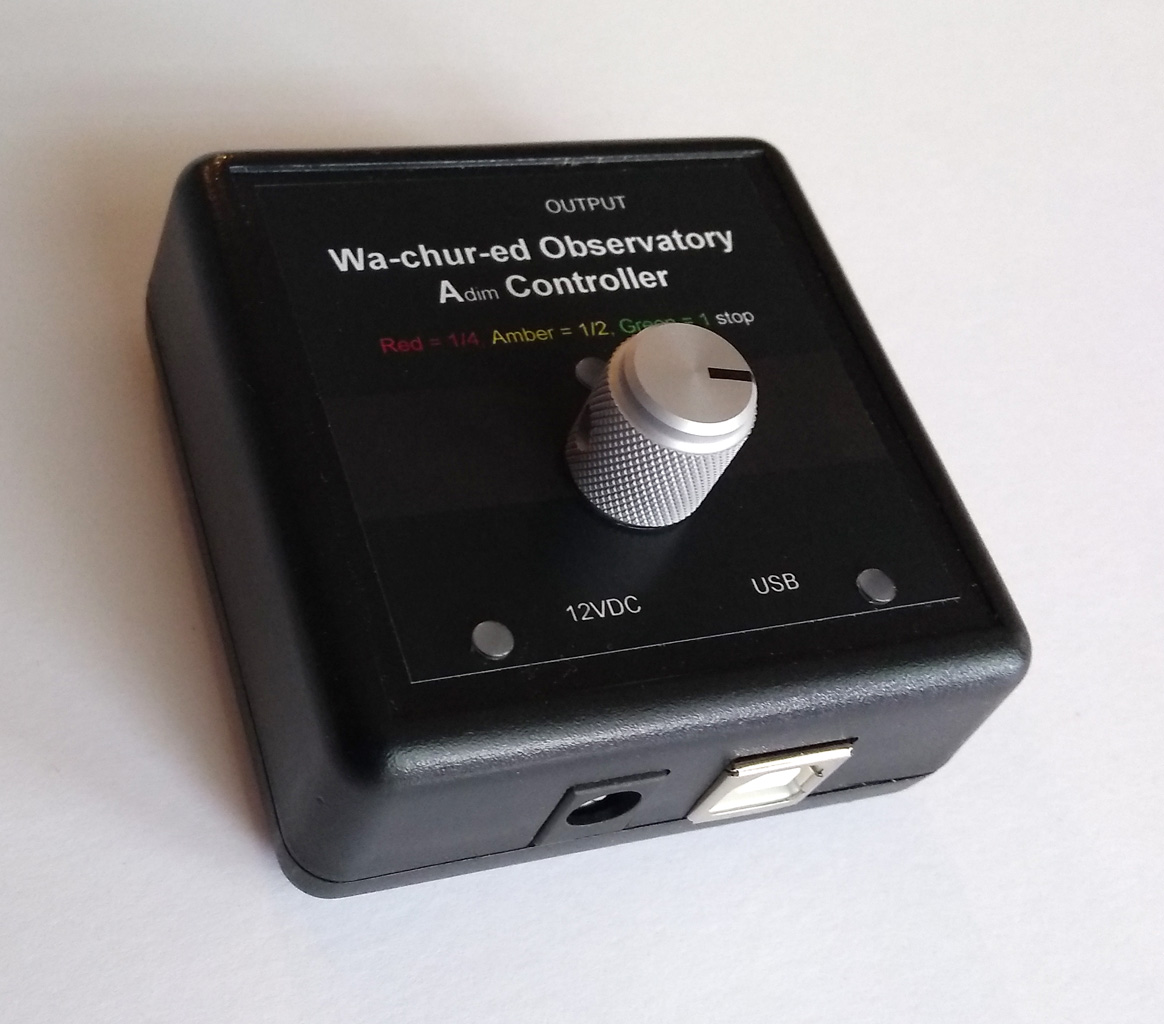Joining in a duet with the ‘Ab Light’ product that I announced recently, it’s now time to unveil the ‘Adim Controller’. Adim (for the musically challenged, this is read as ‘A diminished’) is a dimmer for Ab Light. It could also be used for other 12V devices that would respond well to a PWM power input, including fans and other types of lights. Adim provides both manual and computer-based control, and can drive up to 1.5 amp loads.
The PWM (pulse-width modulation) output operates at 2kHz, meaning that the on/off cycle repeats 2,000 times per second, or every 500 microseconds (half a millisecond). This means that fairly fast shutter speeds can be used without risk of ‘shutter shading’. That is, with a slower speed PWM (and most such dimmers do operate at lower speeds) the light can turn on or off in the middle of an exposure, creating uneven exposure. Since it is not possible to synchronize the PWM to the exposure cycle, the solution is to use an exposure time that is many times the duration of the PWM cycle so that the uneven periods at the beginning an end are insignificant compared to the total exposure. For critical use, I recommend the exposure be at least 100 times the the PWM period, which would be 50 milliseconds (1/20 second) for Adim. Some dimmers would require a minimum exposure of 1 second to achieve the same precision.
The Adim PWM has 1024 steps from OFF to full ON, but ‘brightness’ is really a logarithmic sense, so Adim works in units that are like the f-stops on a camera. A full ‘stop’ increase in exposure doubles the amount of light, and a decrease of one stop halves the brightness. The 1024 PWM steps are therefore divided into 10 full stops of adjustment. The minimum brightness is the full brightness divided by 2^10 (1024). Over most of this range you can choose full, half, or quarter stop steps. At the low end of the brightness range the hardware doesn’t have adequate resolution to provide half and quarter stop steps, but the controller handles this limitation so that each turn of the knob produces a change in brightness (as with the PerfectStar focus controllers, the knob has detents, so it works in discrete steps).
When you push the knob in the LED just above it changes color to indicate the selected step size (full, half, or quarter stop). The two other LEDs provide status of the power and USB connection. 12VDC power input is via a 5.5mm x 2.1mm barrel connector, as is the output to the Ab Light (or other load). The connectors are labelled to keep it clear which is which, but no harm comes from swapping these connections, it just doesn’t work. When I tested this feature I was presented with a surprise: When a 12VDC source is connected to the ‘output’ jack, the LEDs light up and the device looks like it is working, except that any device connected to the other barrel connector receives no power. This is simply an unintended side effect of the design, but of no particular consequence other than a small bit of confusion!
The Adim Controller device is ready now, but there is no software yet, so it can only be used in manual mode for now. The software is expected to be ready in about 2 months, and will include both ASCOM drivers and a stand-alone application that simplifies the process of capturing flats by remembering your hardware configuration and brightness levels for each filter. The price is TBD. Note that the photos here show an aluminum knob, which is what I use on the focus controllers, but this knob is absurdly expensive, so Adim will probably ship with a plastic knob.

